It looks like you're using an Ad Blocker.
Please white-list or disable AboveTopSecret.com in your ad-blocking tool.
Thank you.
Some features of ATS will be disabled while you continue to use an ad-blocker.
share:
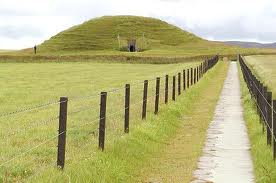
Mae’s Howe is a 5000+ year old Neolithic chambered cairn in Orkney, off the north east coast of Scotland.

Built in around 2800 BC, it comprises of a large central chamber and 3 side chambers. It is most famous, however, for the long central passageway which aligns the last rays of the mid-Winter sun with the back wall of the main chamber.
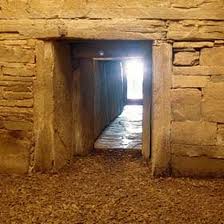
Aaron Watson (University of Reading) and sound technician David Keating tested the sound properties of Scotland’s megalithic chambers at Orkney and at Caithness and revealed some startling discoveries.
“Tests have now shown that the chambers were built to create sonic effects which include what we call today the Helmholtz Resonance – the sound created when one blows across the top of a glass bottle- and sub-sonic vibrations, which may have altered the states of worshipper’s (moods).”
(The Quest for the Celtic Key- MacLeod & Robertson)
Experiments included drumming and chanting at different pitches inside the chamber. The volunteers described a range of sensations including ‘ascending’, changing pulse rates, dizziness, and an unnerving feeling that the sounds were actually coming from inside the head and body.
Where infrasonic pitch was attained, too low for the human ear to hear, sounds could be felt in the body.
Watson has stated that he believes that these chambers were not deliberately designed this way, and that the inhabitants would have stumbled across these properties, and exploited them accordingly. It’s hard to say for sure with any certainty.
Imagine then, entering the low, narrow passage and entering the widening stone central chamber. Being greeted by the priestess or priest, the Magus. Chanting and drumming would fill the air, and it is not difficult to imagine that prolonged exposure to this environment could lead to a belief that one was in another, spiritual realm.
Scottish literature and myth is filled with tales connecting otherworldly music to a far off fairy realm, and could suggest that this phenomenon was common knowledge amongst our ancestors. This is just a tiny bit of the jigsaw puzzle which may help us to better understand our past, our real roots and our potential.
Archeoacoustics
Orkney's Chambered Cairns
Mae's Howe
reply to post by beansidhe
I have only been to Scotland once, really must return someday. The geography and the ancient culture has always pulled at me.
The Dharmic practice of using sound in meditation has carried on for thousands of years, and personally I understand why, as it can take you to alternate realities. I can only imagine the powerful effects of these chambers.
Nice bit of information. Thank you
I have only been to Scotland once, really must return someday. The geography and the ancient culture has always pulled at me.
The Dharmic practice of using sound in meditation has carried on for thousands of years, and personally I understand why, as it can take you to alternate realities. I can only imagine the powerful effects of these chambers.
Nice bit of information. Thank you
Ever been in Mais Howe,it's quite an experience and that's without the drumming and music.What I always found amazing was the Viking grafitti carved
into the stone of the inner chamber,seems people are wonderfully irreverent whatever the era.lol
reply to post by beansidhe
S & F
While many here believe these are 'Space/Alien Spirals' I've always thought they could represent sonic/sound/harmonic waves/patterns.
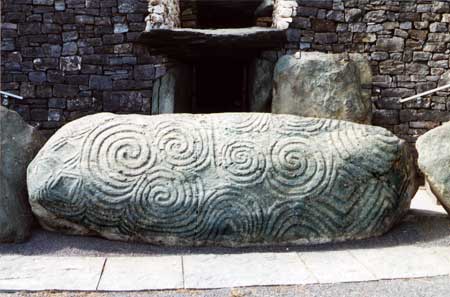
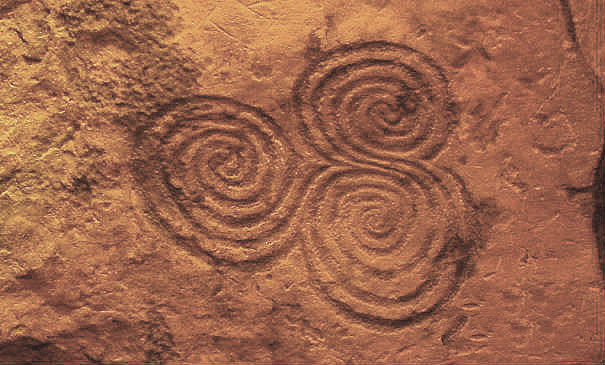
Stay tuned eh?
S & F
While many here believe these are 'Space/Alien Spirals' I've always thought they could represent sonic/sound/harmonic waves/patterns.


Stay tuned eh?
edit on 4-1-2014 by SLAYER69 because: (no reason given)
Even if this thread doesn't get the attention it deserves, especially with all this golden frequency and sound levitation and vibrational speak,
I'm going to S&F because I want to visit there and try meditating inside. Let this be in MyATS for reminder haha
reply to post by fastbob72
It's the human condition! Apparently one inscription says simply 'Helgi was here'!
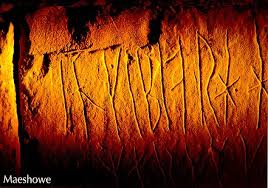
It's the human condition! Apparently one inscription says simply 'Helgi was here'!

reply to post by SLAYER69
You could well be right. I've been looking into Pict stones, partly because I'm in love with the Picts and partly because I want a new tattoo.
Newer thinking about the traditional V-rod stone suggests it might be more than design, and instead represent the astrology needed to grow and farm in the north east of Scotland.


You could well be right. I've been looking into Pict stones, partly because I'm in love with the Picts and partly because I want a new tattoo.
Newer thinking about the traditional V-rod stone suggests it might be more than design, and instead represent the astrology needed to grow and farm in the north east of Scotland.


reply to post by beansidhe
New Tattoo eh?
Anyway, I recently posted a semi-related thread topic. Seems the Ancient Islanders had something going on regarding sound....
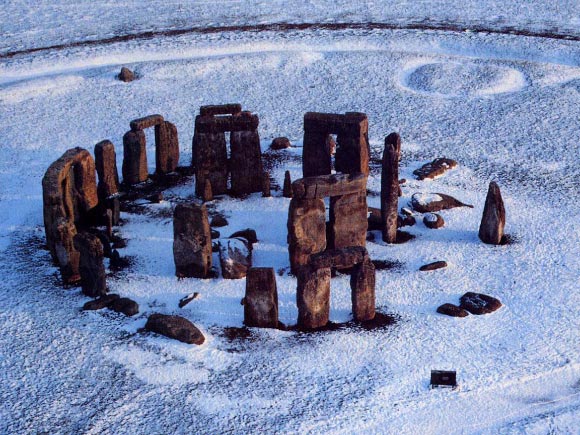
Scientists Reveal Extraordinary Sonic Properties of Stonehenge Bluestones
New Tattoo eh?
Anyway, I recently posted a semi-related thread topic. Seems the Ancient Islanders had something going on regarding sound....

Scientists Reveal Extraordinary Sonic Properties of Stonehenge Bluestones
Dec 2, 2013
British researchers, reporting in the journal Time & Mind: the Journal of Archaeology, Consciousness and Culture, may have cracked the mystery of why the builders of Stonehenge chose to haul some of its giant Bluestones 320 km away from Wales to Salisbury Plain.
According to local legend, the Bluestones possess magical and healing properties.
edit on 4-1-2014 by SLAYER69 because: (no reason
given)
reply to post by SLAYER69
One of (too) many!
Thanks for the link, I remember being a secret flagger!
But healing through sound, now that would be something worth exploring. I wonder if a trance was necessary for operations without strong anesthetic? Although plants grow better around sound, so I wonder...
Something else to think about, cheers Slayer x
One of (too) many!
Thanks for the link, I remember being a secret flagger!
But healing through sound, now that would be something worth exploring. I wonder if a trance was necessary for operations without strong anesthetic? Although plants grow better around sound, so I wonder...
Something else to think about, cheers Slayer x
edit on 4-1-2014 by beansidhe because: italics
reply to post by Witness2008
Hi sorry for the delay, I got caught up in baby bath-time! What is Dharmic meditation? What does it sound like?
Hi sorry for the delay, I got caught up in baby bath-time! What is Dharmic meditation? What does it sound like?
Watson has stated that he believes that these chambers were not deliberately designed this way, and that the inhabitants would have stumbled across these properties, and exploited them accordingly. It’s hard to say for sure with any certainty.
Very interesting subject thanks for the thread
This is the part that I disagree with as I believe that some of these ancient structures were built for their acoustic resonance properties.
Listen to the noise produced here when these stones in Peru are tapped -
www.youtube.com...
Here's Brien Foerster on the acoustic properties of the Red Pyramid in Egypt -
www.youtube.com...
And here's a video showing some sort of transformation of granite in Egypt (MUST WATCH VIDEO) -
www.youtube.com...
We are now well aware that certain sound frequencies can lead to well being 432hz 528hz ect the question is did the ancient builder know this too?
Don't seem to be able to fix the first link by editing so here it is again -
Listen to the noise produced when these stones are tapped they sound almost hollow. Have they been treated with something?
www.youtube.com...
Listen to the noise produced when these stones are tapped they sound almost hollow. Have they been treated with something?
www.youtube.com...
And here again we have a team from a University recording the sound properties in an ancient structure.
Listening to the Gods of Ancient Peru
A research team from Stanford University measures the acoustic properties of shell trumpets and the tunnels beneath the site of Chavìn de Huántar using special microphones. The research is providing new insights into ancient rituals.
archive.archaeology.org...
Listening to the Gods of Ancient Peru
A research team from Stanford University measures the acoustic properties of shell trumpets and the tunnels beneath the site of Chavìn de Huántar using special microphones. The research is providing new insights into ancient rituals.
archive.archaeology.org...
reply to post by JamesTB
Firstly JamesTB, thank you so much for adding all of this to the thread. Secondly, I'm glad you picked up on Watson's statement. It seems, to me, a huge coincidence that many of these sites around Scotland - and also around the world, as you have demonstrated- would have significantly useful sound properties relative to the building.
From your link to the Peruvian studies:
"The researchers found that echoes in the galleries built extremely rapidly and from many directions simultaneously, making them diffuse and hard to locate. Tones in the same frequency range as both human voices and the shell trumpets produced consistent resonances in the alcoves, giving them an unusually rich sound, like singing in a tiled shower. Archaeologists have traditionally been slow to accept evidence that ancient people manipulated their environments to create sound effects. "Acoustics is a gray area for skeptics," Rick says. "I've been a skeptic all my life. You can't just wave your hand and say, 'I hear something strange.'" But the sound-making artifacts and, possibly, the architectural features found at Chavìn make it "extraordinarily likely," according to Rick, that some sort of sound manipulation was going on, especially when combined with the signs of ceremonial practices.
While measuring the site's acoustics is a start, interpreting the results brings up many more questions. Were these properties deliberate or a fluke of construction? Did they exist when the site was occupied, or did they change over time? Moving a wall, or using wood beams to hold up a sagging ceiling, can have a drastic effect on certain frequencies. Even if a site does have unusual acoustics, were they put to use, and if so, how? The most important and most difficult question to answer is whether the sound properties had any cultural significance.
What we can know for certain is that sound has power, and not just in a concert hall. A 2008 UCLA study found that listening to a resonant frequency of 110 hertz, in the range of a shell trumpet or a low male voice, temporarily shifted volunteers' brain activity from the logic processing left side to the emotional right side. Chavìn's religious leaders could have used unearthly noises, along with psychoactive drugs, strange lights, and images, to convince others they held the power of gods, or could become gods themselves. To take it a step further, rituals of sensory overload and coercion may have helped consolidate the priests' power as a newly minted elite."
It may be that some buildings just so happened to possess these qualities, but what I find unlikely is that all ancient structures have a coincidental sound parallel. In other words, I'm wondering whether this knowledge was shared across cultures far earlier than we are led to believe.
Firstly JamesTB, thank you so much for adding all of this to the thread. Secondly, I'm glad you picked up on Watson's statement. It seems, to me, a huge coincidence that many of these sites around Scotland - and also around the world, as you have demonstrated- would have significantly useful sound properties relative to the building.
From your link to the Peruvian studies:
"The researchers found that echoes in the galleries built extremely rapidly and from many directions simultaneously, making them diffuse and hard to locate. Tones in the same frequency range as both human voices and the shell trumpets produced consistent resonances in the alcoves, giving them an unusually rich sound, like singing in a tiled shower. Archaeologists have traditionally been slow to accept evidence that ancient people manipulated their environments to create sound effects. "Acoustics is a gray area for skeptics," Rick says. "I've been a skeptic all my life. You can't just wave your hand and say, 'I hear something strange.'" But the sound-making artifacts and, possibly, the architectural features found at Chavìn make it "extraordinarily likely," according to Rick, that some sort of sound manipulation was going on, especially when combined with the signs of ceremonial practices.
While measuring the site's acoustics is a start, interpreting the results brings up many more questions. Were these properties deliberate or a fluke of construction? Did they exist when the site was occupied, or did they change over time? Moving a wall, or using wood beams to hold up a sagging ceiling, can have a drastic effect on certain frequencies. Even if a site does have unusual acoustics, were they put to use, and if so, how? The most important and most difficult question to answer is whether the sound properties had any cultural significance.
What we can know for certain is that sound has power, and not just in a concert hall. A 2008 UCLA study found that listening to a resonant frequency of 110 hertz, in the range of a shell trumpet or a low male voice, temporarily shifted volunteers' brain activity from the logic processing left side to the emotional right side. Chavìn's religious leaders could have used unearthly noises, along with psychoactive drugs, strange lights, and images, to convince others they held the power of gods, or could become gods themselves. To take it a step further, rituals of sensory overload and coercion may have helped consolidate the priests' power as a newly minted elite."
It may be that some buildings just so happened to possess these qualities, but what I find unlikely is that all ancient structures have a coincidental sound parallel. In other words, I'm wondering whether this knowledge was shared across cultures far earlier than we are led to believe.
Thanks!
Is it a coincidence? Like you I'm not so sure. Here's another acoustic affect from a Peruvian stone -
www.youtube.com...
Is it a coincidence? Like you I'm not so sure. Here's another acoustic affect from a Peruvian stone -
www.youtube.com...
reply to post by JamesTB
You seem to be on slightly different tangent than me, which makes for a much more interesting conversation!
Are you wondering if the stones themselves have been treated in order to make specific sonic frequencies?
You seem to be on slightly different tangent than me, which makes for a much more interesting conversation!
Are you wondering if the stones themselves have been treated in order to make specific sonic frequencies?
reply to post by HelenConway
Always glad to see someone taking interest...
You're welcome
Newgrange
Always glad to see someone taking interest...
You're welcome
Newgrange

Newgrange was constructed over 5,000 years ago (about 3,200 B.C.), making it older than Stonehenge in England and the Great Pyramid of Giza in Egypt. Newgrange was built during the Neolithic or New Stone Age by a farming community that prospered on the rich lands of the Boyne Valley. Knowth and Dowth are similar mounds that together with Newgrange have been designated a World Heritage Site by UNESCO.
edit on 5-1-2014 by SLAYER69 because: (no reason given)
beansidhe
What we can know for certain is that sound has power, and not just in a concert hall. A 2008 UCLA study found that listening to a resonant frequency of 110 hertz, in the range of a shell trumpet or a low male voice, temporarily shifted volunteers' brain activity from the logic processing left side to the emotional right side. Chavìn's religious leaders could have used unearthly noises, along with psychoactive drugs, strange lights, and images, to convince others they held the power of gods, or could become gods themselves. To take it a step further, rituals of sensory overload and coercion may have helped consolidate the priests' power as a newly minted elite."
I personally find it hard to not see it as a control mechanism, but on the other hand, it is doubtful, to me, that the Priest-class themselves fully understood the 'magic' that they practiced, just the effect. And perhaps, as carriers and inheritors of the knowledge, truly saw themselves as intermediaries with the gods. Many of the sites studied so far correspond with worship of Thunder gods.
This is a new body of study, the first paper published on this phenomenon, popularly, was just a few years ago, regarding Stonehenge, in the New Scientist, that suggested that the stones had been positioned to create specific sound effects, noise 'throwing', for example. Since then the subject has exploded, and new sites are being examined all the time. Consistently, we are finding that caves with special cultural significance have special accoustic properties, and in many ways, this amplification, and 'whispering' gallery effect, as well the more complex, manufactured, sound wave interference found at Stonehenge in the February 2012 study, can be seen as emergent technological exploration, that results in the sound technologies of today. What is it that Arthur C Clarke said?
What seems to be a prime concern right now is conservation of these sound properties, and what has potentially already been lost. By creating wider entrances etc, to sacred spaces, to allow tourist access, we may have lost forever whatever unique acoustic properties these locations had which initially inspired the emergence of the technology.
Fascinating subject though...and in my opinion, I don't think, with this phenomenon, psychotropic drug use is necessary, music, and sound, being sufficiently ecstasy inducing, especially combined with dance. I also, find the use of drumming, and other percussive music highly interesting in these contexts. Our hearts match the rhythm, and therefore all hearts present, achieve the same rhythm. Within a cave, it would have been, for those people, as though they were within the womb, feeling the beat of the Great Earth Mother' Heart...as one...must have been a hugely profound experience for them.
Nice thread, thanks
KilgoreTrout
beansidhe
What we can know for certain is that sound has power, and not just in a concert hall. A 2008 UCLA study found that listening to a resonant frequency of 110 hertz, in the range of a shell trumpet or a low male voice, temporarily shifted volunteers' brain activity from the logic processing left side to the emotional right side. Chavìn's religious leaders could have used unearthly noises, along with psychoactive drugs, strange lights, and images, to convince others they held the power of gods, or could become gods themselves. To take it a step further, rituals of sensory overload and coercion may have helped consolidate the priests' power as a newly minted elite."
Fascinating subject though...and in my opinion, I don't think, with this phenomenon, psychotropic drug use is necessary, music, and sound, being sufficiently ecstasy inducing, especially combined with dance. I also, find the use of drumming, and other percussive music highly interesting in these contexts. Our hearts match the rhythm, and therefore all hearts present, achieve the same rhythm. Within a cave, it would have been, for those people, as though they were within the womb, feeling the beat of the Great Earth Mother' Heart...as one...must have been a hugely profound experience for them.
Hi, thanks. Was Kilgore Trout from God Bless You, Mr. Rosewater? He rings a bell, but I can't place him!
I agree with you, in the Scottish studies the volunteers felt the sensations without drugs and for me, there is no real reason to think they would have been necessary. The Peruvian fellow seems to think differently, but maybe drugs are more widely documented there as having been used in ancient times?
I'm interested in your womb-theory, because that is a motif that is familiar, whether in story or song, throughout Scottish prose. As I'm sure you're very well aware, the Scottish environment is such that nature itself is awe-inspiring, and hugely evocative. Heart-beats, chanting, the sense that the drumbeats are coming from within you, making the cairn beat as one; yes all of these things evoke the sense of nature, new life and re-birth.
It would be easy to think oneself 'in-between' worlds here, not of the cool, fresh outside present and not of the pre-birth or the ancestral dead.
new topics
-
The Great Reckoning
Rant: 4 hours ago -
The Inconvenient Bellwether County Dilemma
Education and Media: 4 hours ago -
Elite Universities Are Coddling Students Grieving Over Trump's Victory
Mainstream News: 4 hours ago -
Witnesses who will testify in next week's hearing on UAPs
Aliens and UFOs: 4 hours ago -
Qatar kicks out HAMAS
Middle East Issues: 5 hours ago -
leftwing wymen shaving their head in protest
US Political Madness: 7 hours ago -
Racist Text Messages Mass Distributed
Social Issues and Civil Unrest: 7 hours ago -
No, the election results aren't reminiscent of 1930s Germany. But this is.
US Political Madness: 8 hours ago -
Agree or Disagree
2024 Elections: 10 hours ago -
Leaving the US due to severe TDS?
US Political Madness: 11 hours ago
top topics
-
The Inconvenient Bellwether County Dilemma
Education and Media: 4 hours ago, 25 flags -
Leaving the US due to severe TDS?
US Political Madness: 11 hours ago, 14 flags -
The Great Reckoning
Rant: 4 hours ago, 14 flags -
No, the election results aren't reminiscent of 1930s Germany. But this is.
US Political Madness: 8 hours ago, 14 flags -
Qatar kicks out HAMAS
Middle East Issues: 5 hours ago, 12 flags -
leftwing wymen shaving their head in protest
US Political Madness: 7 hours ago, 10 flags -
Elite Universities Are Coddling Students Grieving Over Trump's Victory
Mainstream News: 4 hours ago, 10 flags -
Agree or Disagree
2024 Elections: 10 hours ago, 7 flags -
Witnesses who will testify in next week's hearing on UAPs
Aliens and UFOs: 4 hours ago, 6 flags -
Racist Text Messages Mass Distributed
Social Issues and Civil Unrest: 7 hours ago, 3 flags
active topics
-
President-Elect DONALD TRUMP's 2nd-Term Administration Takes Shape.
Political Ideology • 56 • : MetalThunder -
Racist Text Messages Mass Distributed
Social Issues and Civil Unrest • 16 • : xuenchen -
The Great Reckoning
Rant • 14 • : lilzazz -
Where ARE the 20 million votes??? Where ARE they????? WHERE???
US Political Madness • 47 • : xuenchen -
The Inconvenient Bellwether County Dilemma
Education and Media • 6 • : putnam6 -
leftwing wymen shaving their head in protest
US Political Madness • 61 • : gort69 -
Liberal women going on sex strike over Trump win
US Political Madness • 62 • : matafuchs -
Qatar kicks out HAMAS
Middle East Issues • 9 • : marg6043 -
Witnesses who will testify in next week's hearing on UAPs
Aliens and UFOs • 3 • : JJproductions -
No links No news source Just a message WE MADE IT TRUMP WON!!
Breaking Alternative News • 79 • : Xtrozero
